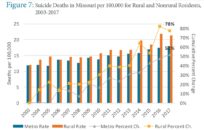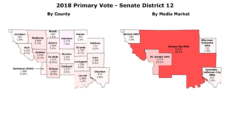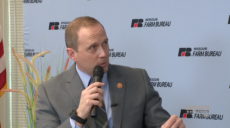Movie nights in the Hawkins house can be a real challenge. Picking a flick always leads to debate, but the bigger challenge is locating the remote. No one ever seems to know where the television, cable box, and Roku remotes are!
That wasn’t always a problem when I was a kid. Growing up, my family’s television came enclosed in a wooden cabinet, and my brother, sister, and I were Dad’s remote for the handful of channels we had.

Back then, everyone watched the evening news and families made time for “Full House” and other sitcoms on ABC’s TGIF lineup. Now, in the world of “smart” devices and video streaming services like Netflix, parents and kids watch what they want, when they want, all because of high-speed internet.
We live in a connected world where broadband is no longer a luxury, but rather a necessity, much like electricity. While the Rural Electrification Act lit up 90 percent of farm homes by 1959, connecting those homes to high-speed internet has proven challenging. But the rural broadband issue isn’t just about entertainment. This issue is about our ability to work, access health care and education, and use cutting-edge technologies on our farms and ranches. Rural broadband supports the building blocks of a strong and sustainable rural community. Paul Harvey didn’t say that a farmer “will finish his 40-hour week by Tuesday noon, and then pain’n from tractor back, will be really upset that his Netflix is buffering.”
Precision agriculture: For a row crop farmer in northeast Missouri, a slow internet connection can prevent an otherwise successful operation from upgrading to the newest precision agriculture technology. Sure, not having GPS with field information is inconvenient, but without access to that technology and other tools, it is more difficult to manage input costs. For instance, greater precision in applying fertilizer where it is needed and at the right rate cuts costs at a time of record-high input prices and improves our environmental stewardship even more.
Small business: While the small-town coffee shop might be the best place to meet on a Tuesday morning to talk shop in between planting and harvest season, if that coffee shop can’t get a rural broadband connection for their cash register system at a reasonable price, the local watering hole may be in trouble. Trying to market a specialty crop like popcorn to grocery stores or customers across the state or country? Make time to drive to the local Mcdonald’s to receive online orders, because that’s the only place with a strong enough wifi connection in your county to conduct eCommerce.
Education: In a world where the changes brought on by a pandemic are still fresh in our minds, a snow day turned virtual day for the local school can mean a missed day of class for a rural student without a broadband connection. Online college classes that could offer a second-generation farmer the opportunity to stay on the farm while getting a degree are off the table too, without a rural broadband connection.
Telehealth: Much of rural America lives more than an hour away from a large hospital or surgical center. While many small rural hospitals provide great basic care for their communities, rural broadband can make the difference between a multi-hour trip to see a specialist, or a trip down the street to your local rural hospital to receive the same quality care via a telehealth visit (with a nurse or doctor you know and trust sitting in).
Precision agriculture, small business, education, and telehealth will help our rural communities stay strong, grow, and thrive, but none of this is possible without a high-speed broadband connection. It’s the thread that connects us and the critical infrastructure that is needed to help bring our kids home and keep rural Missouri thriving. The time is now.

Garrett Hawkins is the president of the Missouri Farm Bureau, the state’s largest farm organization.





















